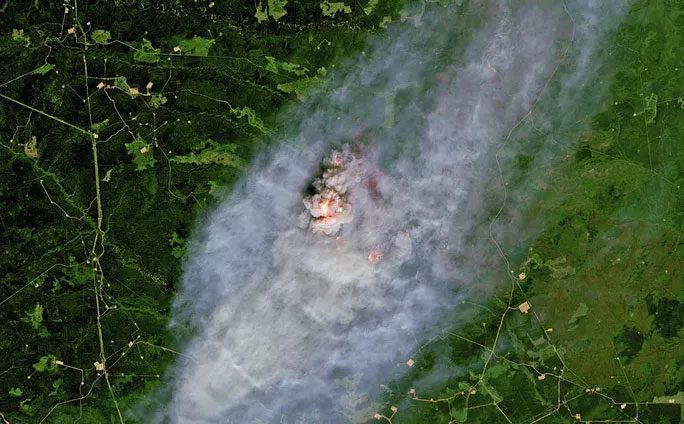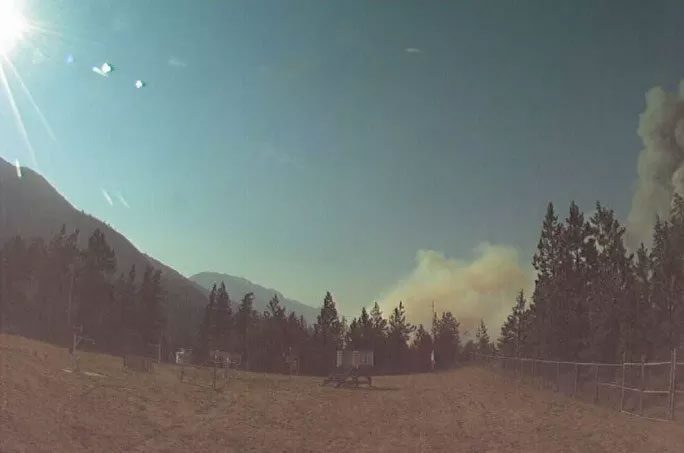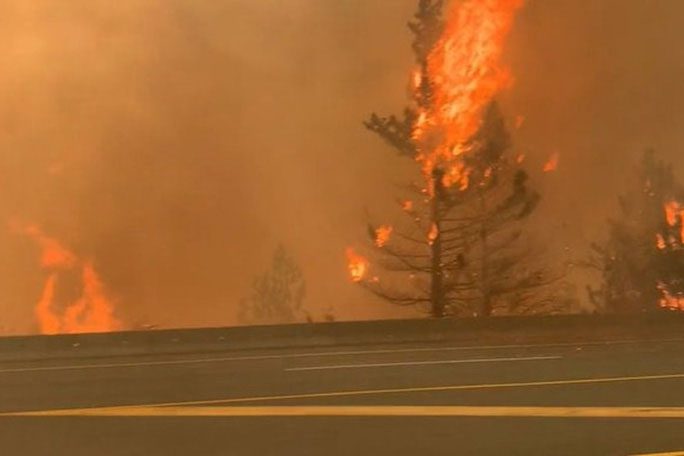Record heat and increasing wildfires are creating firestorms that can generate hundreds of thousands of lightning strikes in the skies over British Columbia and the Northwest region of Alberta, Canada.
As heat and smoke from wildfires rise high into the atmosphere, they can create firestorms that leave meteorologists bewildered.
Chris Vagasky, a meteorologist at Vaisala, a company that specializes in mapping lightning around the world, reported that the North American Lightning Detection Network recorded 710,177 lightning strikes across British Columbia and Northwest Alberta within approximately 15 hours, specifically from 3 PM on June 30 to 6 AM on July 1 (local time).
Of these, 597,314 lightning strikes occurred within clouds, meaning they did not reach the ground. Vagasky noted that there were 112,803 lightning strikes that hit the ground in the same area.
According to Chris Vagasky, these figures are “astonishing” for Canada because “lightning is rarely seen in Canada, about 90% less than in the U.S. In fact, the number of lightning strikes in recent days is greater than what you would see in lightning-prone areas like Texas or Oklahoma.”

Satellite image provided by the European Union showing a wildfire located 40 km northeast of Pink Mountain in British Columbia. (Photo: AP).

Lytton is among the areas suffering from a severe heatwave sweeping the Pacific Northwest. (Photo: Lytton Weather Station).
The Business Insider reported information from Dakota Smith, a meteorologist at the Colorado Institute for Atmospheric Research, who mentioned seeing an incredible firestorm in satellite images above Lytton on June 30.
The heatwave preceding the wildfires prompted the mayor of Lytton in British Columbia to issue an evacuation order for all 250 residents.
Mayor Jan Polderman of Lytton urged residents to leave safely as ‘”the wildfire” threatened buildings and the safety of the town’s residents, after temperatures soared to a record high of 49 degrees Celsius. As of July 1, the fire had spread to nearly 20,000 square kilometers, destroying 90% of Lytton’s area, according to the local newspaper City News.

Temperatures in Lytton remained at 49 degrees Celsius for three consecutive days, engulfing the entire town in flames. (Photo: British Columbia Wildfire Service)
In a statement to the press, Polderman said: “It’s catastrophic, the whole town is on fire… It’s terrible, I’ve never witnessed anything like this.” Videos posted on social media showed many residents driving away from the burning town.
Climate scientist Daniel Swain from the University of California, Los Angeles, remarked that this is an exceptionally severe wildfire, the worst he has seen in satellite imagery. Swain tweeted: “This is a firestorm in the literal sense, generating thousands of lightning strikes and almost certainly countless new fires.”
Many people fled from Lytton to the town of Lillooet, located about 63 km to the north. Lytton is among the areas experiencing a severe heatwave in the Pacific Northwest, which has resulted in over 1,100 hospitalizations and has been linked to nearly 500 deaths. Other wildfires have erupted in the region as the heat continues to scorch Western Canada.



















































